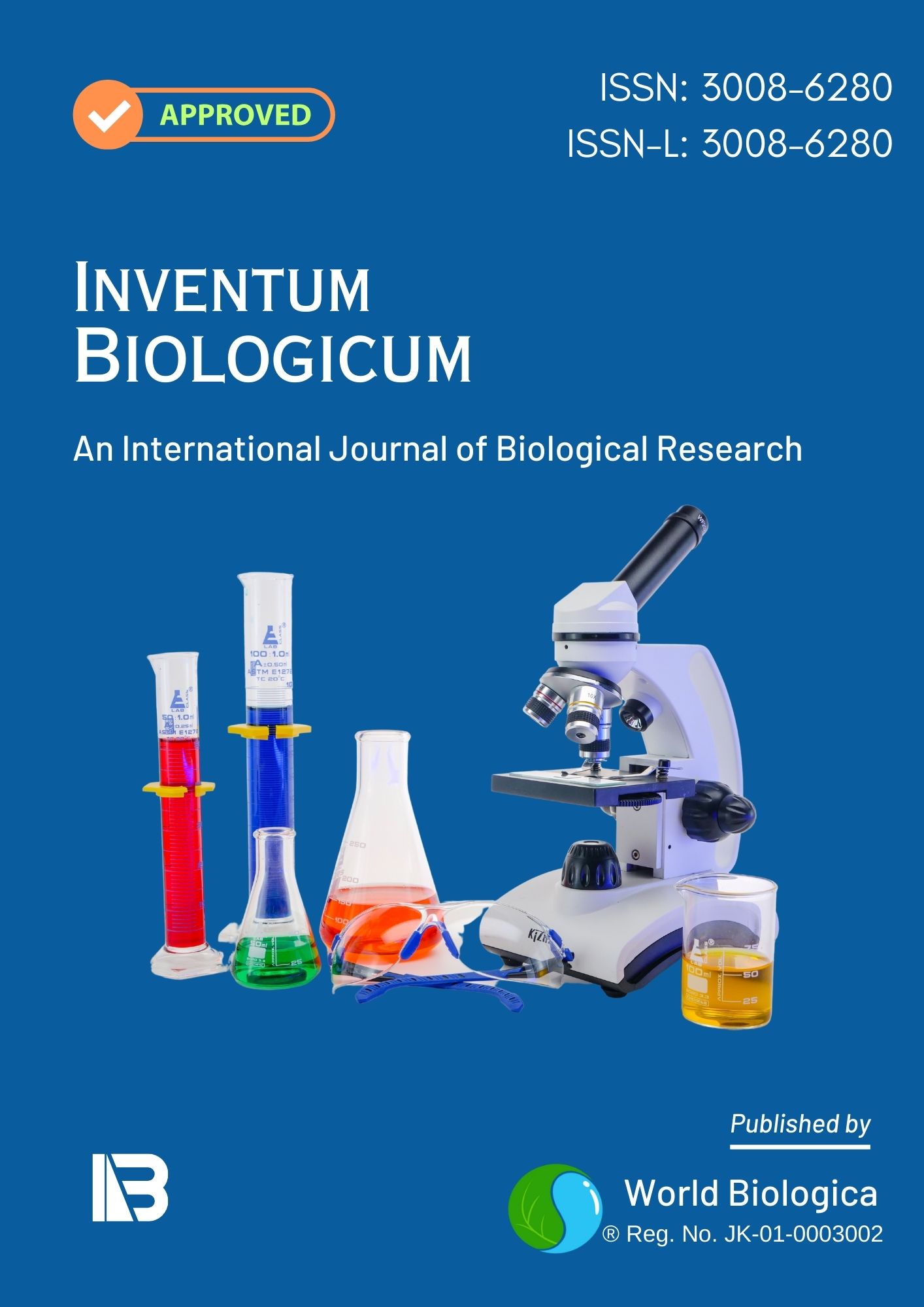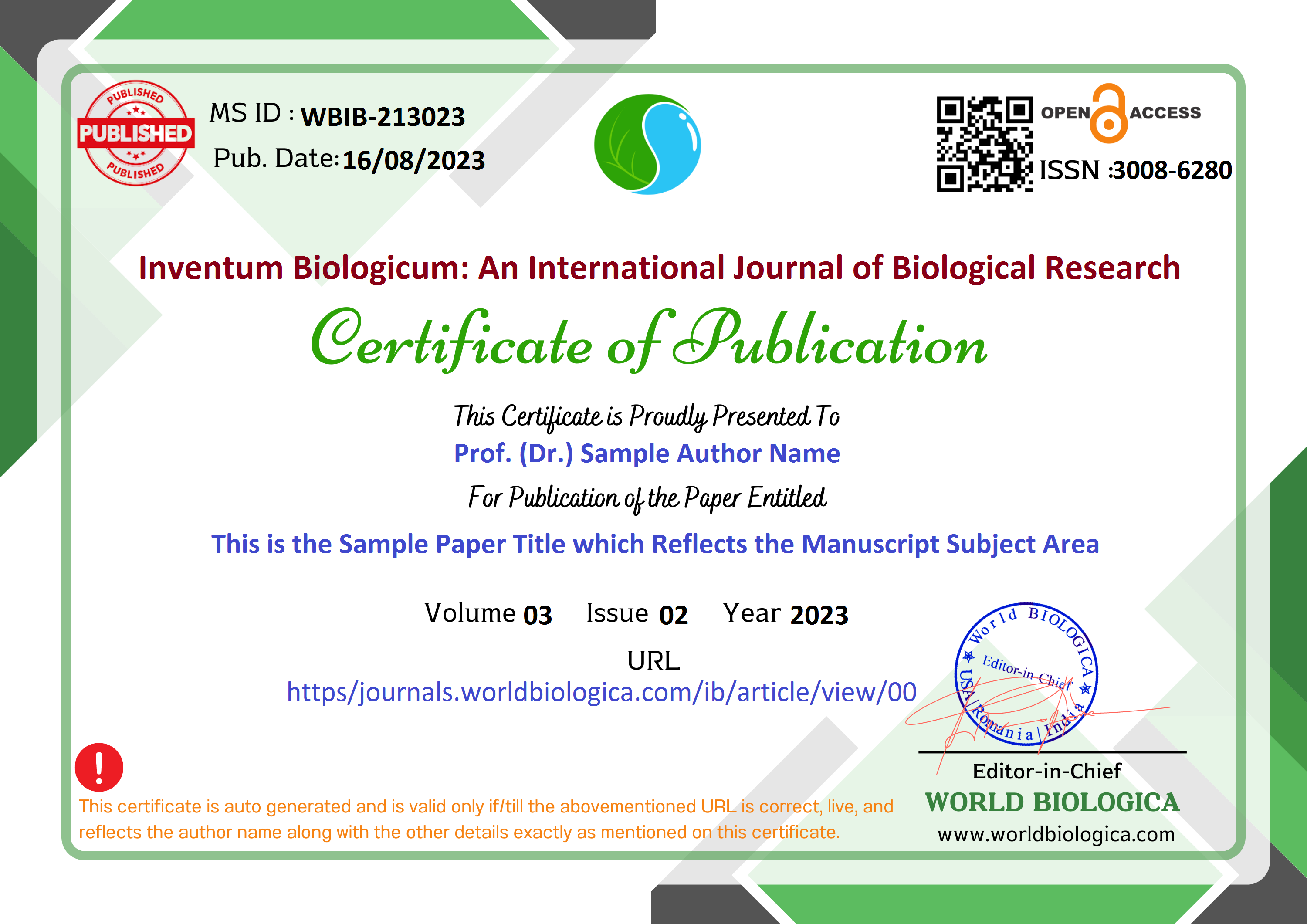Analysis of Isolated Yeast Strains from Different Sources for Bio-ethanol Production
Keywords:
Yeast, Bio-ethanol, Alcohol tolerance, Growth kinetics, DNS testAbstract
The generation of bioethanol and alcoholic beverages uses yeast (Saccharomyces cerevisiae) on a worldwide scale; however, its activity is hampered by the buildup of intracellularly produced ethanol on cell viability. In the past, various yeast strains and their condition of culture is being employed to lessen the ethanol stress impact on the expression of the gene; however, these methods are affected by a range of factors. But there are similarities observed in the gene ontology because of the effects of ethanol, which indicates that the energy production constraints compromise Saccharomyces cerevisiae's ability to respond to stress from ethanol by increasing the expression of genes related to glycolysis and the mitochondrial TCA cycle while decreasing the expression of ATP-mediated growth-associated processes. Saccharomyces cerevisiae was used as the reference strain in the current study. Different strains of yeast were isolated from different materials, and the growth of the strains isolated was monitored.
Further, the ethanol measurement was carried out using the DNS method. The yeast strain with the best growth rate was used in the alcohol tolerance test to withstand ethanol stress. In the future, the molecular underpinnings of the yeast strain's tolerance to alcohol can help with genetic engineering to create methods for enhancing its function under ethanol stress.
Downloads
References
Cabañas, K. T., Peña-Moreno, I. C., Parente, D. C., García, A. B., Gutiérrez, R. G., & de Morais Jr, M. A. (2019). Selection of Saccharomyces cerevisiae isolates for ethanol production in the presence of inhibitors. 3 Biotech, 9(1), 6. https://doi.org/10.1007/s13205-018-1541-3
Della-Bianca, B. E., de Hulster, E., Pronk, J. T., van Maris, A. J. A., & Gombert, A. K. (2014). Physiology of the fuel ethanol strain Saccharomyces cerevisiae PE-2 at low pH indicates a context-dependent performance relevant for industrial applications. FEMS Yeast Research, 14(8), 1196–1205. https://doi.org/10.1111/1567-1364.12217
Demirbas, A. (2008). Biofuels sources, biofuel policy, biofuel economy and global biofuel projections. Energy Conversion and Management, 49(8), 2106–2116. https://doi.org/10.1016/j.enconman.2008.02.020
Gnansounou, E., & Dauriat, A. (2005). Ethanol fuel from biomass: A review. Journal of Scientific and Industrial Research, 64, 809–821.
Kumar, R. S., Shankar, T., & Anandapandian, K. T. K. (2011). Characterization of alcohol-resistant yeast Saccharomyces cerevisiae isolated from Toddy. Int. Research Journal of Microbiology, 2(10), 399–405.
Nagodawithana, T. W., & Steinkraus, K. H. (1976). Influence of the rate of ethanol production and accumulation on the viability of Saccharomyces cerevisiae in “rapid fermentation” Applied and Environmental Microbiology, 31(2), 158–162. https://doi.org/10.1128/aem.31.2.158-162.1976
Nordin, M. A., Razak, F. A., & Himratul-Aznita, W. H. (2015). Assessment of antifungal activity of bakuchiol on oral-associated Candida spp. Evidence-Based Complementary and Alternative Medicine: eCAM, 1, 1–7.
Parapouli, M., Vasileiadis, A., Afendra, A. S., & Hatziloukas, E. (2020). Saccharomyces cerevisiae and its industrial applications. AIMS Microbiology, 6(1), 1–31. https://doi.org/10.3934/microbiol.2020001
Ramos, C. L., Duarte, W. F., Freire, A. L., Dias, D. R., Eleutherio, E. C. A., & Schwan, R. F. (2013). Evaluation of stress tolerance and fermentative behavior of indigenous Saccharomyces cerevisiae. Brazilian Journal of Microbiology, 44(3), 935–944. https://doi.org/10.1590/S1517-83822013005000051
Schmer, M. R., Vogel, K. P., Varvel, G. E., Follett, R. F., Mitchell, R. B., & Jin, V. L. (2014). Energy potential and greenhouse gas emissions from bioenergy cropping systems on marginally productive cropland. PLOS ONE, 9(3), e89501. https://doi.org/10.1371/journal.pone.0089501
Sivasakthivelan, P., Saranraj, P., & Sivasakthi, S. (2014). Production of ethanol by Zymomonas mobilis and Saccharomyces cerevisiae using sunflower head wastes – A comparative study. International Journal of Microbiology Research, 5(3), 208–216.
Stanley, D., Bandara, A., Fraser, S., Chambers, P. J., & Stanley, G. A. (2010). The ethanol stress response and ethanol tolerance of Saccharomyces cerevisiae. Journal of Applied Microbiology, 109(1), 13–24. https://doi.org/10.1111/j.1365-2672.2009.04657.x
Tahir, A., Aftab, M., & Farasat, T. (2010). Effect of cultural conditions on ethanol production by locally isolated Saccharomyces cerevisiae BIO-07. Journal of Applied Pharmacy, 3(2), 72–78.
Tenkolu, G. A., Kuffi, K. D., & Gindaba, G. T. (2022). Optimization of fermentation condition in bioethanol production from waste potato and product characterization. Biomass Conversion and Biorefinery, 1-19. https://doi.org/10.1007/s13399-022-02974-4
Watanabe, D., Wu, H., Noguchi, C., Zhou, Y., Akao, T., & Shimoi, H. (2011). Enhancement of the Initial Rate of ethanol Fermentation Due to dysfunction of Yeast Stress Response Components Msn2p and/or Msn4p. Applied and Environmental Microbiology, 77(3), 934–941. https://doi.org/10.1128/AEM.01869-10
Yamaoka, C., Kurita, O., & Kubo, T. (2014). Improved ethanol tolerance of Saccharomyces cerevisiae in mixed cultures with Kluyveromyces lactis on high-sugar fermentation. Microbiological Research, 169(12), 907–914. https://doi.org/10.1016/j.micres.2014.04.007
Downloads
-
Download PDF
 Abstract Views: 128,
Abstract Views: 128,  Download PDF: 43
Download PDF: 43
Published
How to Cite
Issue
Section
License
Copyright (c) 2023 Inventum Biologicum: An International Journal of Biological Research

This work is licensed under a Creative Commons Attribution-NonCommercial-NoDerivatives 4.0 International License.

















